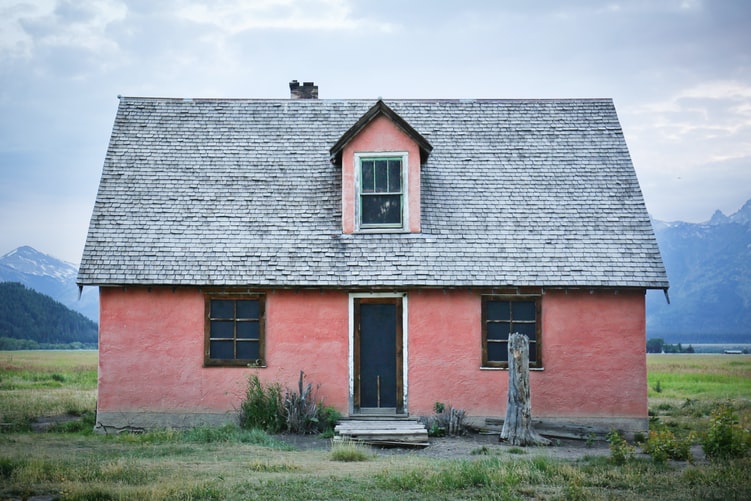Depending on the material of your shingles, as well as the climate and weather events of your region, most roof shingles last from 20-30 years. Other factors that can influence how long roof shingles last include the brand of shingle or specific product line, how your roof was installed, and if you’ve performed routine maintenance on your roof.
In this post, we’re going to take a deeper look at the average lifespan for various shingle types, common causes of wear to roofing shingles, and how to know if you can get away with a few repairs or if it’s time to install a new roof on your home.
How Long Do Roof Shingles Last?
Different materials and shingle types have different life expectancies. The most common shingle type, asphalt roof shingles, last 15 to 25 years. 3 tab shingles, which are a popular affordable asphalt roof shingle, will last an average of 10-20 years. They hold up well for moderate climates, but sometimes need repair after high winds or extreme weather.
Architectural and premium asphalt shingles are more durable and reinforced to handle high winds. They last around 20-30 years, varying with brand and installation. Higher quality shingles have extended warranties that guarantee roof protection over their lifetime. Other shingle types have similar lifespans. Cedar shakes and composite roof shingles can last 30 years with regular maintenance and offer similar wind resistance.
Causes and Signs of Wear to Roof Shingles
The outside world is no friend to shingles. Your roof shingles’ purpose is to protect you from the elements, but the elements cause continual wear and tear on your shingles. Here are some of the common causes of wear to roof shingles and how to spot them.
Heating and Cooling of Roof Shingles
Just like asphalt on the roads, asphalt on your shingles expands and contracts with fluctuating temperatures throughout the year. Repeated heating and cooling of asphalt shingles can cause cracking and curling. Shingles are reinforced to withstand seasonal temperature changes, but over time shingles will weaken under these conditions. Sun exposure can also cause oxidation and fading of your shingles, making them appear older and weakening the holding power of the asphalt binder.
Weathering of Roof Shingles
Common weather damage can also include rain and moisture, especially if you live in a climate that is particularly humid. Moisture can work its way under shingles and through the protective layers if they are old or have tears or cracks. If you live in an area that receives significant snowfall, cycling freezing and melting can cause asphalt to crack.
Wind is also dangerous to shingles. While most quality shingles are reinforced to stand up to high wind speeds, sudden gusts can loosen, displace or remove low or medium quality materials. Other storm damage such as hail or falling tree branches can break or pull off shingles.
Age of Roof Shingles
Over time, roof shingles naturally get older and lose their ability to protect your home. Eventually, all roofing materials need to be replaced. If your roof is approaching 20 years old, it might be time to start shopping for a new one.
Is it Time to Repair Roof Shingles or Get a New Roof?
If your roof is showing signs of wear and tear such as cracks, thinning surface material, curling, loose or missing shingles, faded color or other abnormalities, it may be time to fix the affected shingles or install a new roof. It can be difficult to know when it’s time to repair versus replace your roof.
Repairing a Shingled Roof
If damage to your roof shingles is only on a certain part of your roof, such as the result of a hail or storm event, you may be able to fix the affected area without replacing the entire roof. A good way to tell if you can repair a small area is if most shingles appear to be in good shape and there isn’t deeper damage that compromises your roof’s ability to repel water and protect your home. If this is the case, you may be able to attach new shingles and blend them with the existing roof material.
Replacing Your Roof
If the damage to your roof covers 25 percent or more of the surface or you notice curled or cracked shingles in multiple areas of your roof, it’s probably time to replace it. If you have more extreme damage that is causing your roof to sag or leak it’s definitely time for a new one. You’ll want to replace your roof before water or weather damage affects your home’s structure, as those repairs will be more extensive and costly to fix.
Additionally, if the roof is over 20 years old it’s probably nearing the end of its life, so it makes more sense to invest in a new roof rather than keep patching it just to replace it later. If your roof is getting old, it will likely be faded so new patched shingles would stand out. A new roof will be consistent, have reinforced protective power for your home, and add to your property’s value.
Time for a Professional Roof Installation?
Certified installers of high-quality products will help you make the most of your new roof. They can recommend which products will work best for your home, based on industry knowledge and climate considerations.
If you notice your shingles are starting to wear a little thin or you’re unsure if it’s time for a new roof, Werner Roofing can help. We’re here to help you assess how long your existing roof shingles last and install a new roof if needed. We can help you find a new shingle option that’s warranted to last as much as 50 years! Give us a call at 616-844-5382 or reach out to us online for a free roofing estimate.


